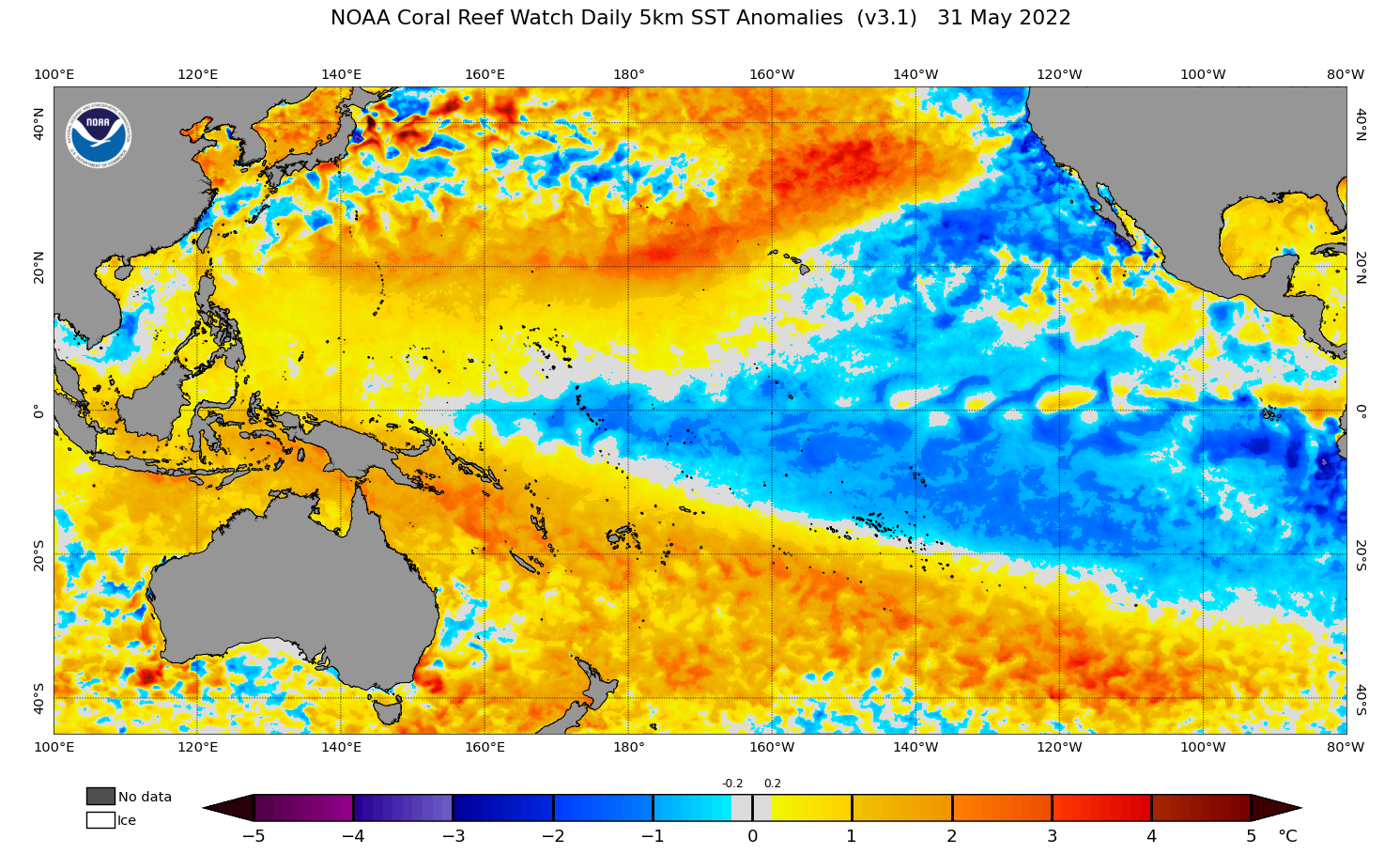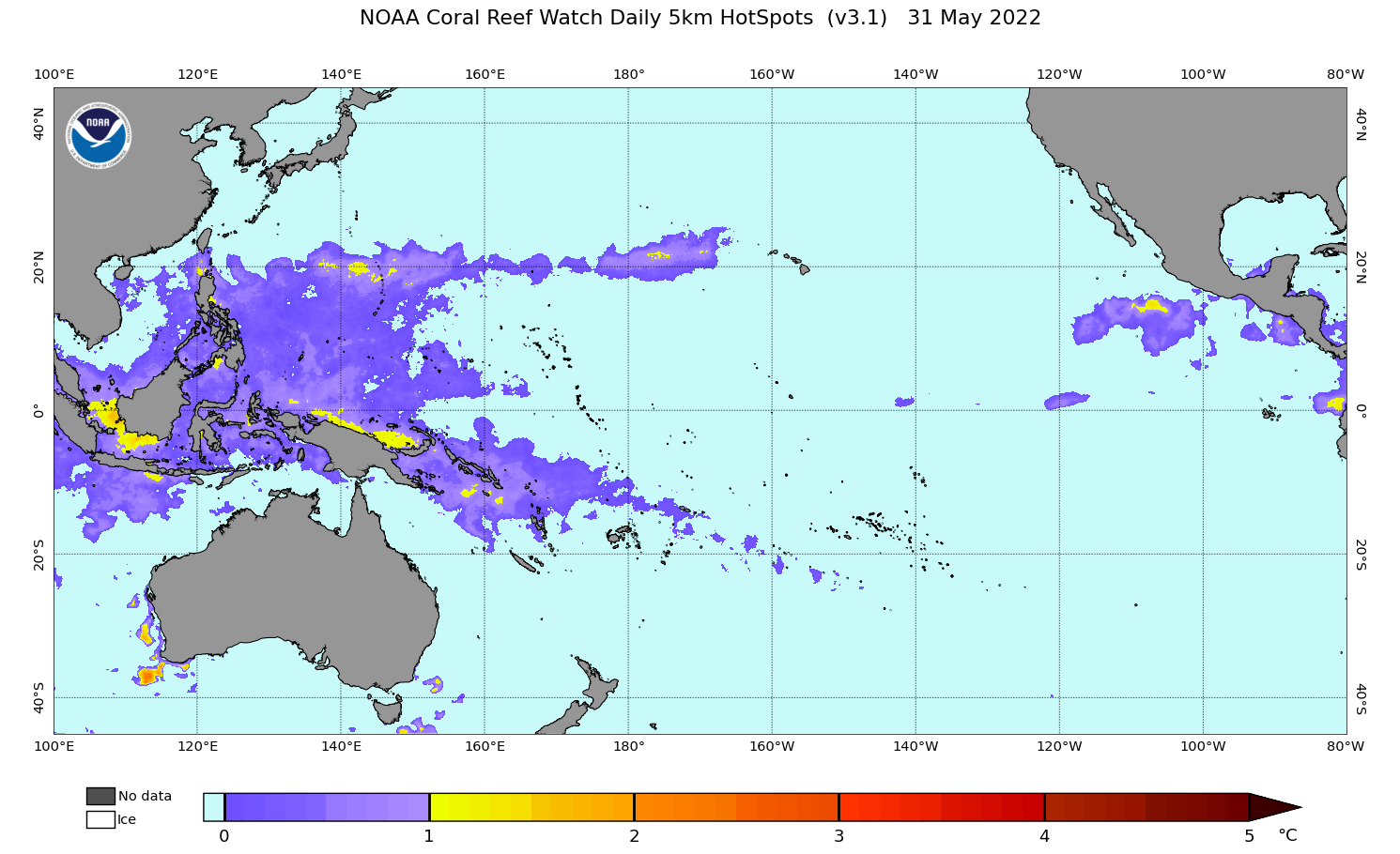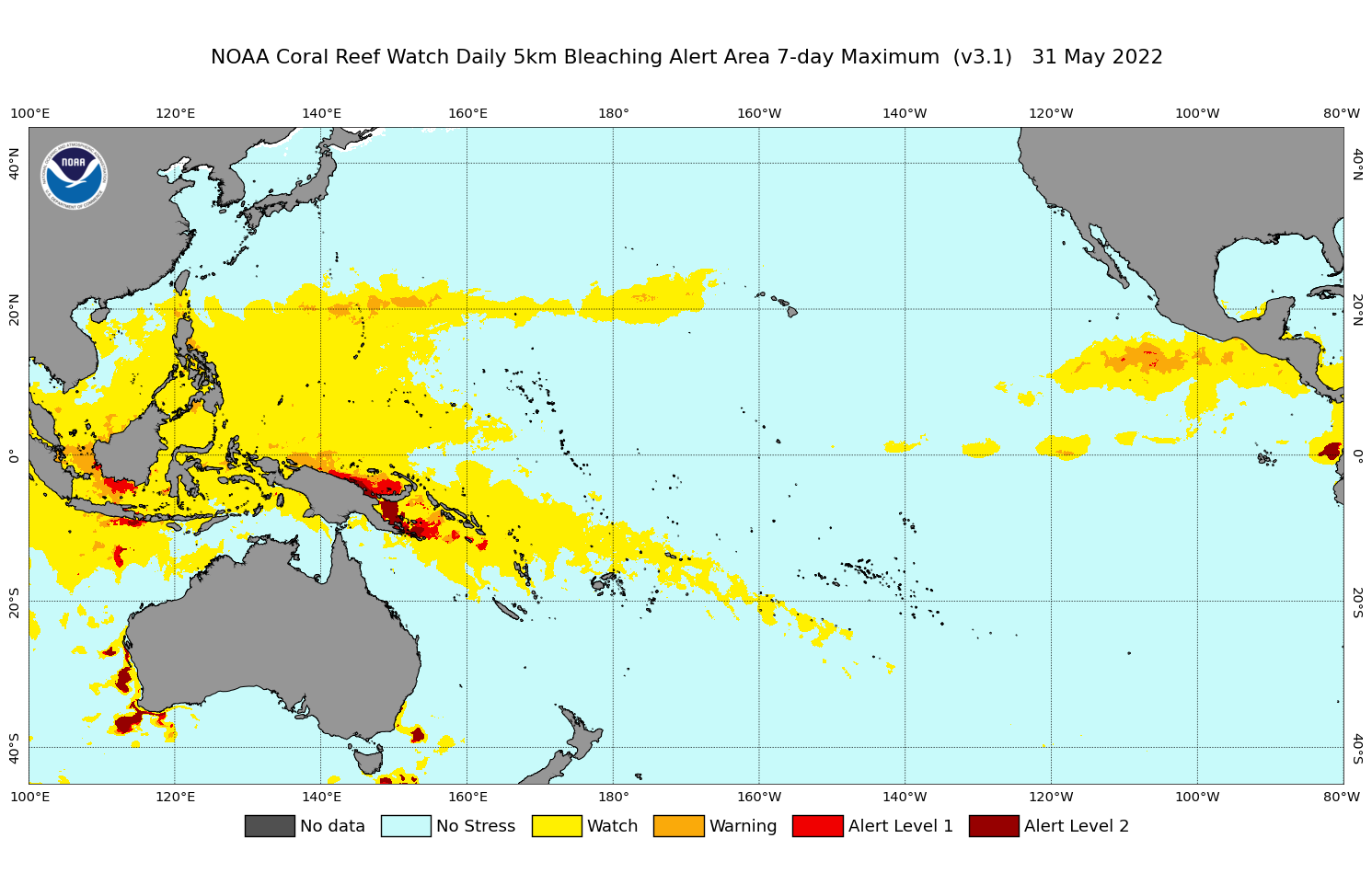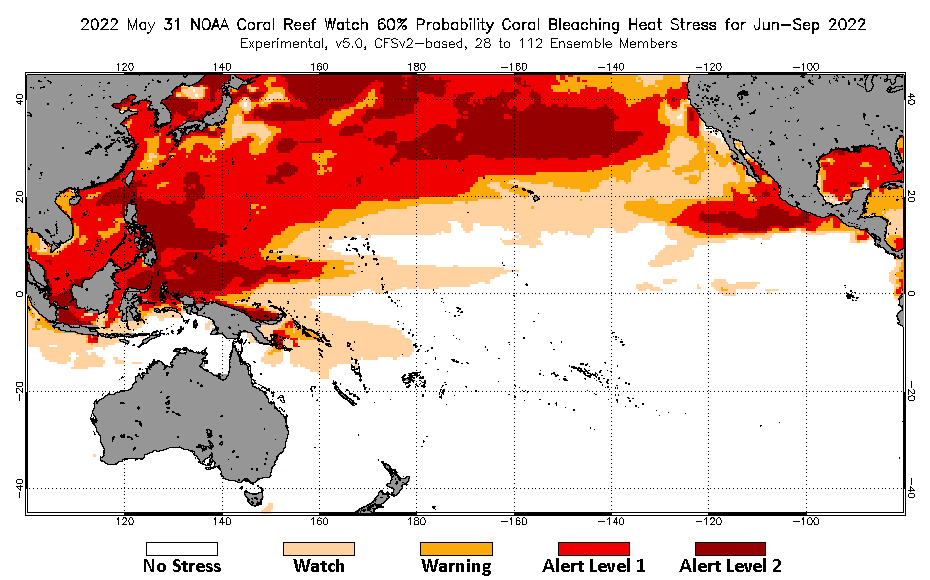Coral Bleaching Heat Stress Analysis and
Seasonal Guidance through September 2022
(Released May 31, 2022)
Current conditions:
NOAA Coral Reef Watch's (CRW) near real-time satellite monitoring shows the sea surface temperature (SST) as being predominantly below-average across most of the central and eastern equatorial Pacific Ocean (Figure 1), which is consistent with the ongoing La Niña. SST anomalies remain above-average in areas of the western Pacific, including the Commonwealth of the Northern Mariana Islands (CNMI), Guam, the Federated States of Micronesia, Palau, and Papua New Guinea (PNG). Above-average SSTs (as much as 2 °C) have persisted around the Northwestern Hawaiian Islands (NWHI) since early April 2022. As of May 12, 2022, the NOAA National Centers for Environmental Prediction's (NCEP) El Niño-Southern Oscillation (ENSO) Alert System remains at La Niña Advisory. La Niña is favored to continue (about 61% chance) through Northern Hemisphere autumn and early winter, potentially heading towards a La Niña for a third year.

|
||
|
Figure 1. NOAA Coral Reef Watch's Satellite Sea Surface Temperature (SST) Anomaly product for the Pacific region. |
||
Over the past three months, Coral Bleaching HotSpots have been concentrated in the Southern Hemisphere. Regions where HotSpots exceeded 1 °C were focused in the southern Pacific, around PNG, the Great Barrier Reef (GBR) in Australia, New Caledonia, and Fiji. Currently HotSpots above 1 °C are limited to PNG and the northern islands of the CNMI (Figure 2). HotSpots below 1 °C are starting to develop to the south of the central NWHI -- a rare development so early in the region, compared with CRW's historical data. As of May 31, 2022, PNG is the only region in the Pacific Ocean at Bleaching Alert Level 2; the majority of the Pacific is at Bleaching Watch (Figure 3). Prior Alert Level 2 heat stress in the GBR, Fiji and New Caledonia dissipated at the end of March. Partners in Fiji reported widespread coral bleaching in April, predominantly in the southern parts of the region, with less severity in the north, including in Taveuni and the Yasawa Islands; these in-water observations matched CRW's satellite monitoring during this period.

|
||
|
Figure 2. NOAA Coral Reef Watch's Satellite Coral Bleaching HotSpot product for the Pacific region. |
||

|
||
|
Figure 3. NOAA Coral Reef Watch's Satellite Bleaching Alert Area (7-day maximum) product for the Pacific region. |
||
CRW's most recent Four-Month Coral Bleaching Outlook (Figure 4) projects heat stress will continue to increase in the western Pacific through August 2022. CRW expects heat stress to reach Alert Level 1 around Guam and the NWHI by September.

|
||
|
Figure 4. NOAA Coral Reef Watch's Four-Month Coral Bleaching Outlook of May 31, 2022, for the period June-September 2022, for the Pacific region. |
||
***NOTE: We recommend that users continue to monitor updates in the Four-Month Outlook predictions (https://coralreefwatch.noaa.gov/satellite/bleachingoutlook_cfs/index.php), for their regions of interest/concern, over the months ahead, along with the changes in coral bleaching heat stress detected by our near real-time satellite products (https://coralreefwatch.noaa.gov/product/5km/index.php).***
CRW's current satellite and modeled products can be found at:
https://coralreefwatch.noaa.gov/index.php
CRW's modeled Four-Month Coral Bleaching Heat Stress Outlooks can be found at:
https://coralreefwatch.noaa.gov/satellite/bleachingoutlook_cfs/outlook_cfs.php
CRW's 5km satellite Regional Virtual Stations can be found at:
https://coralreefwatch.noaa.gov/product/vs/map.php
Sign up for automated bleaching alert emails for CRW's 5km Regional Virtual Stations at:
https://coralreefwatch.noaa.gov/subscriptions/vs.php
Please report bleaching events (or non-events) at:
https://coralreefwatch.noaa.gov/satellite/research/coral_bleaching_report.php
Disclaimer
The content posted on this web page solely represents the opinions of the authors and does not constitute a statement of policy, decision, or position on behalf of NOAA or the US Government.
The appearance of external links on this World Wide Web site does not constitute endorsement by the Department of Commerce/National Oceanic and Atmospheric Administration of external Web sites or the information, products or services contained therein. For other than authorized activities, the Department of Commerce/NOAA does not exercise any editorial control over the information you may find at these locations. These links are provided consistent with the stated purpose of this Department of Commerce/NOAA Web site.